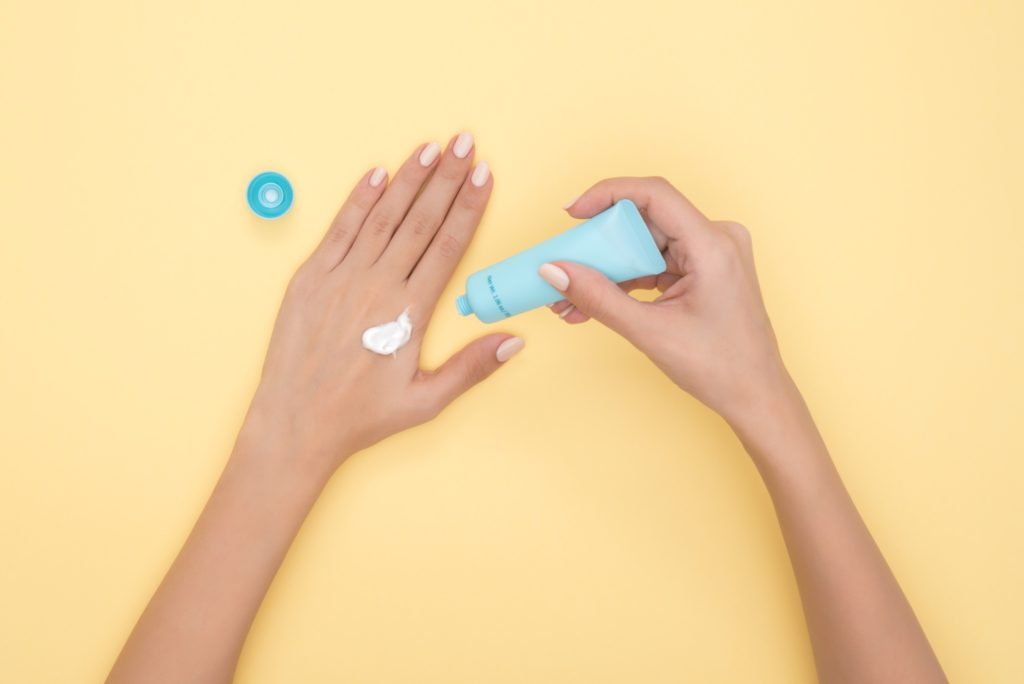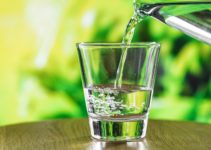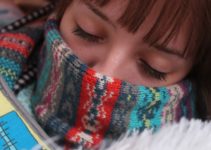
The cosmetics, shampoos, lotions and other products we put on our bodies can be just as harmful as anything we put in them. Ingredients found in face washes, sunscreens and more have been linked to everything from hormonal disruptions to cancer, and what’s worse is that they go directly into your bloodstream when applied to the skin or hair. While there are certainly lots of studies with different perspectives on this topic, everyone can agree that using more natural products is the safest bet for you and the environment. When checking product ingredients, these are the most important ones to avoid, or in some cases, use with care. It’s also important to note, many of these ingredients have very similar names, while being completely different chemical that may not be dangerous. Or worse, many times there are multiple names for the same ingredient, so companies try to hide what they are using by calling it something else. If you’re thinking, “oh man, this all sounds so confusing!,” you’re not wrong!
1. Sodium lauryl sulfate
Found in: shampoo, body wash, foundation, face wash, mouthwash and toothpaste
SLS has been shown to cause or contribute to: skin irritation, canker sores, disruptions of skin’s natural oil balance and eye damage. It is also widely believed to be a major contributor to acne (especially cystic acne) around the mouth and chin.
Not to be confused with: SLES is sodium Laureth sulfate, this ingredient is more gentle than SLS and has been approved for use in many personal care products. Sodium C14-16 olefin sulfonate is a sulfonate molecule which is not a sulphate.
2. BHA
Found in: exfoliants, perfume
The National Toxicology Program classifies butylated hydroxyanisole (BHA) as “reasonably anticipated to be a human carcinogen.” It can cause skin depigmentation. In animal studies, BHA produces liver damage and causes stomach cancers such as papillomas and carcinomas and interferes with normal reproductive system development and thyroid hormone levels. The European Union considers it unsafe in fragrance.
3. Triclosan and triclocarban
Found in: toothpaste, deodorant, antibacterial soap
Triclosan was all the rage as antibacterial products became ubiquitous in the 1990s. Even the FDA agrees that there is no health benefit to humans who use triclosan, and in 2013 ruled that manufacturers using it had to demonstrate that there were no long-term detrimental effects. Triclosan (in liquid products) and triclocarban (in bar soaps) have been linked to hormonal disruptions, bacterial resistance, impaired muscle function, impaired immune function and increased allergies. Instead, use naturally antibacterial and antiseptic agents like tea tree oil.
4. Aminophenol, Diaminobenzene, Phenylenediamine (Coal Tar)
Found in: hair dye, shampoo
Coal tar, a byproduct of coal processing, is a known human carcinogen, according to the National Toxicology Program and the International Agency for Research on Cancer. Hair stylists and other professionals are exposed to these chemicals in hair dye almost daily. Europe has banned many of these ingredients in hair dyes. While FDA sanctions coal tar in specialty products such as dandruff and psoriasis shampoos, the long-term safety of these products has not been demonstrated.
5. Parabens
Found in: makeup, moisturizer, shaving gel, shampoo, personal lubricant and spray tan products
The FDA acknowledges several studies linking parabens, which mimic estrogen, to breast cancer, skin cancer and decreased sperm count, but has not ruled that it is harmful. According to the European Commission’s Scientific Committee on Consumer Products, longer chain parabens like propyl and butyl paraben and their branched counterparts, isopropyl and isobutylparabens, may disrupt the endocrine system and cause reproductive and developmental disorders. Look for ingredients with the suffix “-paraben” as well—paraben-free products will be labeled as such.
6. Polyethylene/PEGs
Found in: scrubs, body wash, makeup, toothpaste
Those tiny plastic beads in face or lip scrubs and exfoliating washes are made from polyethylene (used because they’re gentler on the skin than natural exfoliators like walnut shells). These synthetic chemicals are frequently contaminated with 1,4-dioxane, which the U.S. government considers a probable human carcinogen and which readily penetrates the skin. Polyethylene has been noted as a skin irritant and should never be used on broken skin. Polyethylene beads in scrubs and body washes also are not filtered by our sewage systems, meaning they can collect pollutants and travel into waterways, where they’re consumed by fish and marine animals.
7. Retinyl palmitate, retinyl acetate, retinoic acid and retinol
Found in: moisturizer, lip products, sunscreen, anti-aging products
Retinol products (often found in anti-aging products) aren’t bad for you in general (except for pregnant and breastfeeding women, who should avoid them). However, they have the opposite intended effect and become carcinogenic in sunlight, making it extra important to only use them at night and to avoid any sunscreens containing retinol-derived ingredients. So while you don’t need to avoid retinol completely, make sure you know which products it’s in and only use at night.
8. Petroleum distillates
Found in: mascara
Petroleum-extracted cosmetics ingredients may cause contact dermatitis and are often contaminated with cancer-causing impurities. They are produced in oil refineries at the same time as automobile fuel, heating oil and chemical feedstocks.
9. “Fragrance”
Found in: moisturizers, deodorant, lotion, face cream, shampoo, conditioner
Federal law doesn’t require companies to list on product labels any of the chemicals in their fragrance mixture. Recent research from Environmental Working Group and the Campaign for Safe Cosmetics found an average of 14 chemicals in 17 name-brand fragrance products, none of them listed on the label. Fragrances can contain hormone disruptors and are among the top 5 allergens in the world. My advice? Buy fragrance-free wherever possible.
10. Oxybenzone
Found in: sunscreen
Oxybenzone is one of the highest-risk chemicals found in sunscreen. It acts like estrogen in the body, alters sperm production in animals and is associated with endometriosis in women. Studies on cells and laboratory animals indicate that oxybenzone and its metabolites may disrupt the hormone system. Opt for sunscreens with zinc oxide or titanium oxide or avobenzene instead.
11. dibutyl phthalate, toluene and formaldehyde
Found in: nail polish and other nail products
These chemicals, known as the “toxic trio,” have been linked to birth defects, endocrine disruption, headaches and respiratory problems—especially concerning for nail salon workers and those who frequently get manis or pedis. It’s advised that pregnant women avoid nail products altogether. Brands like OPI and Zoya have pledged to remove these chemicals from their products.
12. Hydroquinone
Found in: skin lighteners
The FDA warns that this skin-bleaching chemical can cause a skin disease called ochronosis, with “disfiguring and irreversible” blue-black lesions on exposed skin. Illegally imported skin lighteners can contain mercury, which can poison adults and children and is especially toxic during pregnancy. Be wary of imported skin lighteners, don’t buy products without ingredients clearly labeled, and always avoid products with “mercury,” “calomel”, “mercurio” or “mercurio chloride.”


